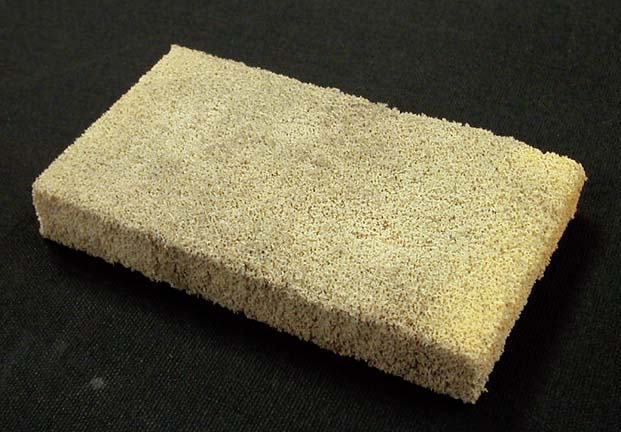Indiana University Libraries Book Repair Manual
Dry Cleaning Sponge

Originally intended for cleaning felt hats and lampshades, these pure rubber sponges are used in the disaster restoration business, following fires, to remove loose soot from ceilings and interior walls of structures and from contents. We use them for the dry cleaning of books and paper, particularly for dust and dry mold. Their use almost always follows that of a soft brush and/or HEPA vacuum, and the latter may also follow their use. Though similar, their function differs from that of the soft eraser and eraser crumbs in that they are used more for dry, loose matter left behind by the brush or vacuum, rather than for smudge-type stains. They are the better choice for cleaning large expanses of paper, provided the paper is not delicate.
An old method for the dry cleaning of paper is to use bread, and from the physical standpoint it's a sensible choice for the purpose; it's soft but slightly abrasive, somewhere between moist and totally dry, and absorbent. The characteristics of these dry cleaning sponges suggest that bread may have been the model of their creation. They are soft, dense, and cellular and will dry out and become crusty on the surface if left out in open air. They have a very high capacity for absorbing dry, loose matter. Very unlike bread, they seem to be resistant to mold growth. They are much tougher than bread but do crumble a bit when rigorous rubbing is required, especially if the surface being cleaned is at all abrasive.
The sponges are always used in the absolutely dry state and contact with water should be avoided. They are said to be washable but seem to lose effectiveness once washed. Instead we occasionally give them a rub on a coarse grit abrasive belt and store them in plastic bags, each marked whether for dust or mold. Thus treated, they seem to remain effective indefinitely.